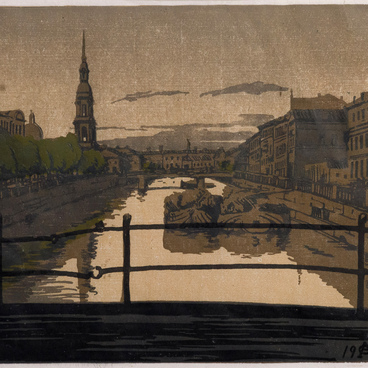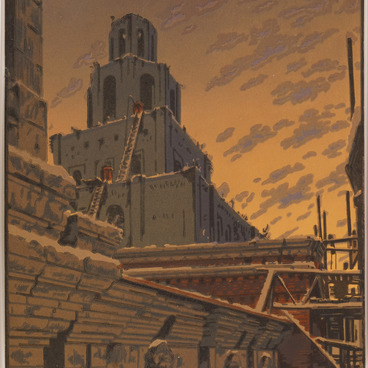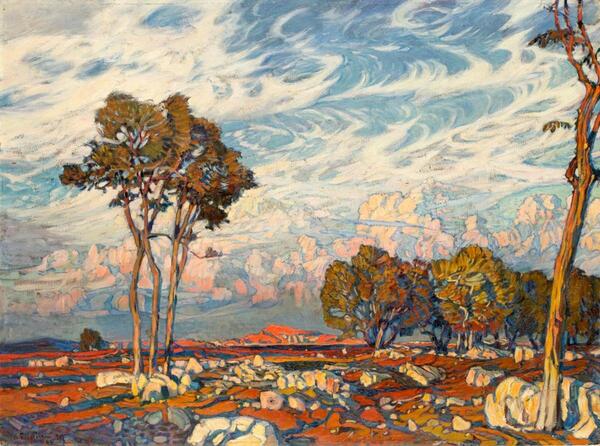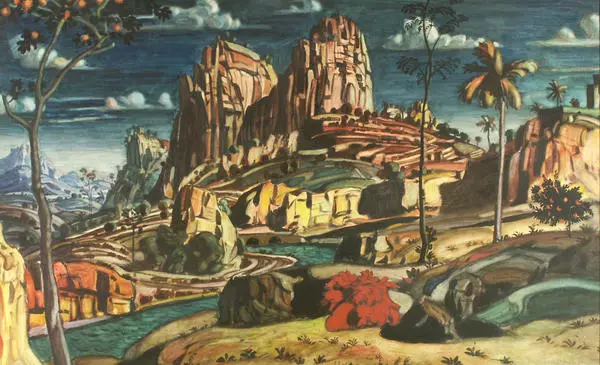The collection of the Irbit State Museum of Fine Arts houses the autolithograph “VANITAS” created by Konstantin Bogaevsky.
Konstantin Fyodorovich Bogaevsky (1872–1943) was a Russian and Soviet landscape painter from Feodosia, who is sometimes associated with the Cimmerian school of painting. He combined the traditions of symbolism, Quattrocento, and the heroic landscape of the 17th century. The core theme of his work is ancient Cimmeria, with its majestic mountains, winding hills, ancient cities, and dazzling sun.
Bogaevsky never parted with a pencil since he was seven. He first got artistic inspiration from the oleography “Eruption of Mount Vesuvius”, which his parents happened to have. There were three people who played a huge part in his later life. One of them was the artist Arkhip Kuindzhi. He was the one to notice the young student of the Saint Petersburg Academy of Arts and invite him to his workshop. It may be said without exaggeration that the old master gave his protegee a creative impulse that would set his artistic path for many years to come. Bogaevsky’s first painting teacher was Adolf Fessler, a devoted copyist of Aivazovsky’s works. Another person in Bogaevsky’s life, who always helped him and acted as some kind of a guardian angel, was the artist Konstantin Kandaurov. And finally, the third person who strongly influenced the talented artist from Feodosia was the poet and artist Maximilian Voloshin, who lived in Koktebel near Feodosia.
All of Bogaevsky’s works are closely connected with the ancient land of the Eastern Crimea. The artist felt and understood the austere, unique beauty of those places deeply and became, as Maximilian Voloshin figuratively put it, “the voice of this ancient land”. “There are no words to convey the delight I sometimes feel about nature. I can never have enough of it, I would need a hundred lives to enjoy it, not just one!” — this is what Bogaevsky wrote about his home ground.
In the early 1920s, the artist turned to an unfamiliar technique — lithography. Maximilian Voloshin had long predicted that Bogaevsky would be very good at it. Indeed, his graphic legacy is no less valuable than his paintings. In 1923, an album of Bogaevsky’s lithographs called “Landscapes of Cimmeria” was published, and one of the sheets is now presented in the museum. Konstantin Bogaevsky’s style is unique and, unfortunately, has not been continued in Russian art.








